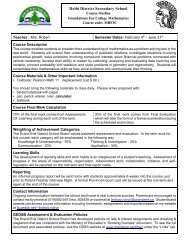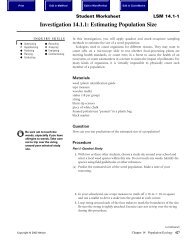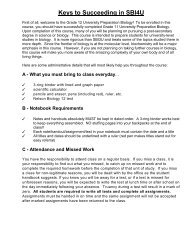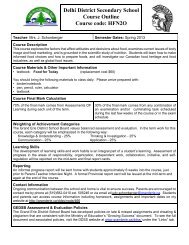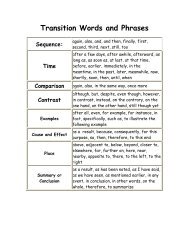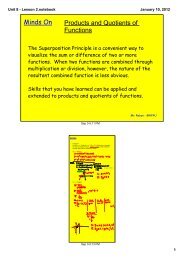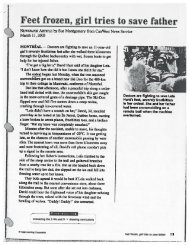Chapter 11.pdf
Chapter 11.pdf
Chapter 11.pdf
- No tags were found...
You also want an ePaper? Increase the reach of your titles
YUMPU automatically turns print PDFs into web optimized ePapers that Google loves.
Forming a Real ImageConvex lenses are useful because they can form a real image on ascreen. For example, the light rays coming from one point on the flamein Figure 11.57 diverge and strike the lens at different places. However,the lens redirects all those rays so that they converge at a single point.The screen must be placed so that the light rays strike it exactly as theyconverge. This way, when the light rays reflect off the screen, they arecoming from a single point, just like when they originally left a singlepoint on the candle.At the same time, the lens must also redirect all light rays that comefrom a point at the base of the candle and send them to a single point onthe screen. The rays then reflect off the screen in all directions, just likewhen the light rays from the base of the candle left the candle. Whenthe rays from every point on the candle are sent to the screen, acomplete image is formed. You can compare the type of image formed atdifferent distances as well as some of the uses of convex lenses inTable 11.7.During ReadingComparing Graphicsand TextRead the paragraph on forming areal image, and then look at thegraphics beneath the explanation.Which was easier to understand —the word text or the graphics?Would you be able to understandone feature without the support ofthe other, i.e., words withoutgraphics or graphics withoutwords? How did each graphichelp you to understand the ideamore fully?screencandleimage(upside down)Suggested Activity •D24 Quick Lab on page 459Figure 11.57 As you can see in this illustration, there is one drawback to convex lenses.The image is upside down!Table 11.7 Images Formed by Convex LensesDistance of Objectfrom LensType of ImageFormedHow Image Is UsedRay DiagramMore than two focallengthsSmaller,inverted,realA camera uses thisdistance to makesmaller images of anobject.imageobjectFimageBetween one andtwo focal lengthsLarger,inverted,realPhotographicenlargers, slideprojectors, and movieprojectors use thisdistance.imageobjectFimageLess than one focallength awayLarger,upright,virtualMagnifying glassesand reading glassesmake use of thisdistance.imageobjectFRay diagrams model the behaviour of light in mirrors and lenses.453



